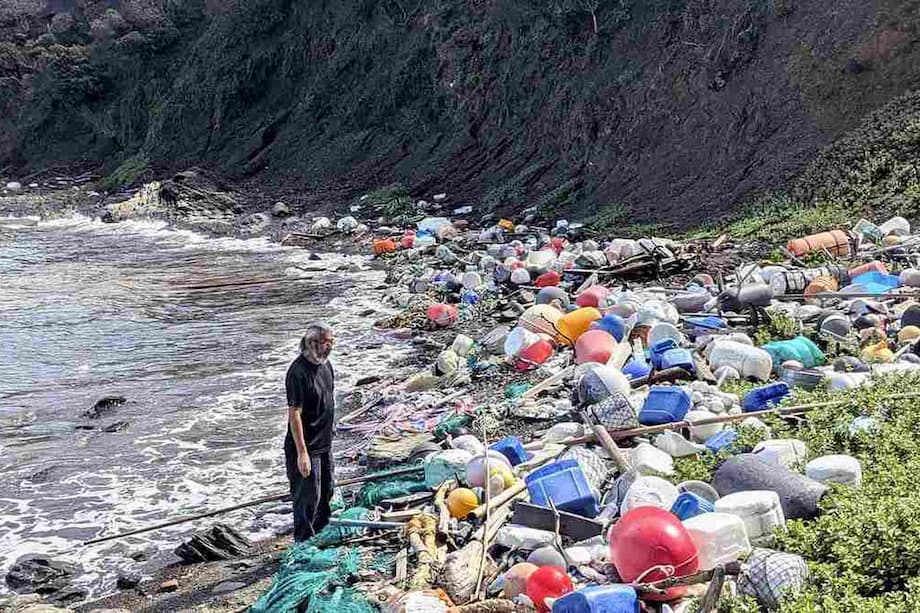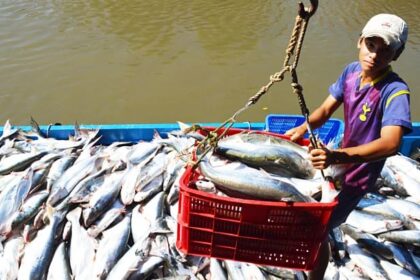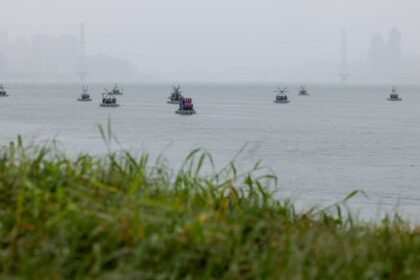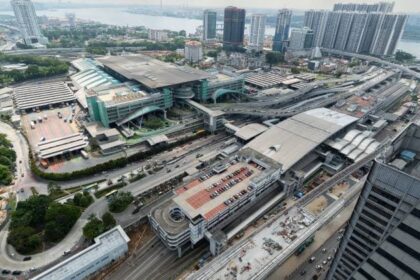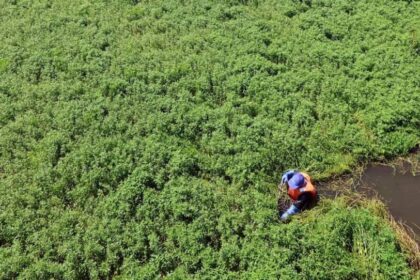Plastic Waste Floods the Sea of Japan: A Growing Environmental Crisis
Along the rugged coastline of the Sea of Japan, a mounting tide of plastic waste is washing ashore, threatening marine life, local economies, and the health of communities. This crisis is not confined to Japan alone; it is a stark symbol of a broader regional and global problem, as plastic debris from across Asia accumulates on Japanese beaches and ocean floors. Despite repeated cleanup efforts and international negotiations, the problem persists, raising urgent questions about responsibility, solutions, and the future of our oceans.
- Plastic Waste Floods the Sea of Japan: A Growing Environmental Crisis
- How Did the Sea of Japan Become a Plastic Dumping Ground?
- Why Is Plastic Pollution So Persistent?
- International Efforts and Stumbling Blocks
- Domestic Solutions: Japan’s Policies and Innovations
- The Human and Ecological Toll
- What Needs to Change?
- In Summary
How Did the Sea of Japan Become a Plastic Dumping Ground?
The Sea of Japan, also known as the East Sea, is bordered by Japan, South Korea, Russia, and North Korea. Its western coastline, particularly around Tsushima in Nagasaki Prefecture, has become a hotspot for marine debris. According to city estimates, between 30,000 and 40,000 cubic meters of drifting garbage reach Tsushima each year, with more than half consisting of plastic products such as bottles, containers, and packaging. In 2024, surveys found that 54% of collected plastic bottles originated from China and Taiwan, and 38% from South Korea, highlighting the transboundary nature of the pollution.
Ocean currents and winds carry this waste across borders, making it a truly international issue. Heavy rains and typhoons exacerbate the problem, sweeping even more debris into the sea and onto Japanese shores. Despite frequent cleanups, the relentless influx of waste continues, overwhelming local authorities and volunteers.
Plastic Waste: A Regional and Global Menace
The Organisation for Economic Cooperation and Development (OECD) estimates that about 20 million tonnes of plastic waste enter the global environment each year, with 90% coming from developing countries due to inadequate waste management. Asia is at the epicenter of this crisis. Rivers such as the Mekong, which flows through China, Myanmar, Laos, Thailand, Cambodia, and Vietnam, are among the world’s top contributors of plastic waste to the oceans. Southeast Asian countries like Indonesia, the Philippines, Vietnam, and Malaysia are also significant sources, often due to limited infrastructure and illegal dumping.
Japan itself is not blameless. It ranks second globally, after the United States, in per capita generation of plastic packaging waste, producing about 32 kilograms per person annually as of 2015. While Japan boasts a robust waste management system, much of its “recycling” involves incineration, which generates carbon emissions and does not prevent plastics from entering the environment through other means.
Why Is Plastic Pollution So Persistent?
Plastic’s durability, low cost, and versatility have made it ubiquitous in modern life. However, these same qualities make it a persistent pollutant. Once discarded, plastic can take hundreds of years to break down. When exposed to sunlight and wind, it fragments into microplastics—tiny particles that are easily ingested by marine life and can enter the human food chain.
Recent research by the Japan Agency for Marine-Earth Science and Technology (JAMSTEC) revealed vast quantities of plastic waste on the deep seabed around Japan, including items dating back to the 20th century. In some areas, researchers found up to 40,000 plastic items per square kilometer, with 70% to 80% being polyethylene bags and the rest primarily bottles and food containers. The lack of light in the deep sea means these plastics degrade even more slowly, persisting for decades or longer.
The Microplastics Threat
Microplastics are now found throughout the world’s oceans, including in the Sea of Japan. These tiny fragments can absorb toxic chemicals and are consumed by fish and other marine organisms, posing health risks to both wildlife and humans. Studies have shown that microplastics can cause physical harm to marine animals, disrupt reproductive systems, and accumulate up the food chain, potentially impacting human health when seafood is consumed.
International Efforts and Stumbling Blocks
Recognizing the scale of the crisis, countries have attempted to forge international agreements to tackle plastic pollution. Recent intergovernmental negotiations in Switzerland aimed to establish the world’s first treaty to prevent plastic pollution. However, these talks failed to reach an agreement, raising concerns about further delays in addressing the issue. Disagreements persist over the scope of regulations, targets, and the responsibilities of developed versus developing countries.
Japan has played a complex role in these negotiations. While it led the G20 in adopting the Osaka Blue Ocean Vision in 2019—an initiative aiming to reduce additional marine plastic pollution to zero by 2050—it has also hesitated to sign certain international charters that set binding targets, citing concerns about the impact on daily life and industry. Nevertheless, Japan has committed to providing technical assistance to Asian countries, helping them establish waste sorting and collection systems and training 10,000 personnel in waste control.
Regional Cooperation: Japan and ASEAN
Japan’s cooperation with the Association of Southeast Asian Nations (ASEAN) has been a cornerstone of regional efforts. Through initiatives like the ASEAN Regional Action Plan for Combating Marine Debris and the Japan-ASEAN Integrative Fund, Japan supports capacity building, public awareness campaigns, and the development of national action plans to reduce marine debris. These partnerships focus on improving waste management, monitoring plastic pollution, and promoting innovation in materials and recycling technologies.
Despite these efforts, challenges remain. Many Southeast Asian countries still rely on open landfills and have low recycling rates, making it difficult to stem the flow of plastic into the oceans. The global plastic waste trade, which saw a surge in exports to Southeast Asia after China banned most plastic imports in 2017, has further complicated the situation. While the volume of traded plastic waste has declined, the risk of mismanaged waste entering the ocean remains high in countries with inadequate infrastructure.
Domestic Solutions: Japan’s Policies and Innovations
Within Japan, both public and private sectors are working to reduce plastic waste. The Plastic Resource Circulation Law, effective since 2022, requires businesses to reduce the volume of plastic products. However, penalties apply only to large businesses, limiting the impact on smaller operations. Some business owners cite cost and customer preference as barriers to switching from plastic to alternatives.
Retailers have started charging for plastic bags, a move aimed at encouraging consumers to bring their own bags and reduce unnecessary plastic use. The government hopes this fee will prompt people to reconsider their packaging habits and contribute to broader reductions in plastic waste. While plastic shopping bags account for only about 2% of all plastic waste in Japan, the policy is seen as a catalyst for changing consumer behavior.
Corporate Initiatives and Technological Breakthroughs
Japanese companies are also stepping up. Kirin Holdings, for example, promotes label-free bottles and supports a circular economy, where materials are reused and recycled rather than discarded. Researchers at the Riken Centre for Emergent Matter Science and the University of Tokyo have developed a new plastic that dissolves in seawater within hours, offering hope for future solutions to ocean pollution. Although not yet commercialized, such innovations could play a crucial role in reducing the persistence of plastic in marine environments.
The Human and Ecological Toll
The impact of plastic pollution extends far beyond unsightly beaches. Marine life, including fish, seabirds, and turtles, often mistake plastic for food, leading to injury, starvation, and death. Fishing communities suffer as plastic debris damages nets and reduces catches. In Indonesia, for example, plastic waste has forced some fishers to switch to fish farming in filtered ponds to avoid contaminated waters.
Plastic pollution also threatens biodiversity and the livelihoods of millions who depend on healthy oceans. The fisheries sector is a direct source of income for nearly 62 million people worldwide, 85% of whom live in Asia and the Pacific. As plastic accumulates in the food chain, concerns grow about its long-term effects on human health, particularly through the consumption of seafood contaminated with microplastics and associated chemicals.
What Needs to Change?
Experts agree that no single country can solve the plastic pollution crisis alone. The transboundary nature of ocean currents means that waste generated in one country can easily end up on the shores of another. As Ryota Nakajima, a biological oceanographer with JAMSTEC, put it:
“The world is connected by the ocean, in which a massive amount of plastic waste is coming and going. To keep the ocean unpolluted, countries and regions must cooperate with each other. It’s hopeless otherwise.”
Integrated waste management, stakeholder collaboration, public education, and global responsibility are essential. Solutions include:
- Improving waste collection and recycling infrastructure, especially in developing countries
- Promoting biodegradable and alternative materials
- Advancing chemical recycling technologies
- Establishing a circular economy for plastics
- Enforcing stricter regulations on plastic production and disposal
- Encouraging consumer behavior change through education and incentives
International treaties and regional action plans must be backed by concrete targets, funding, and enforcement mechanisms. Involving the private sector, civil society, and local communities is crucial for sustainable change.
In Summary
- The Sea of Japan’s coastline is inundated with plastic waste, much of it originating from other Asian countries, due to ocean currents and inadequate waste management.
- Japan is both a victim and a contributor, ranking second globally in per capita plastic packaging waste and facing challenges in reducing its own plastic footprint.
- Plastic pollution persists because of plastic’s durability, widespread use, and the slow pace of international cooperation and policy implementation.
- Microplastics pose significant risks to marine life and human health, accumulating in the food chain and the deep sea.
- International negotiations for a global treaty on plastic pollution have stalled, but regional cooperation between Japan and ASEAN offers hope for progress.
- Japan is implementing domestic policies, supporting innovation, and providing technical assistance to neighboring countries, but more comprehensive and enforceable measures are needed.
- Experts stress that only coordinated global action, improved waste management, and changes in consumer and industry behavior can stem the tide of plastic pollution threatening the world’s oceans.


